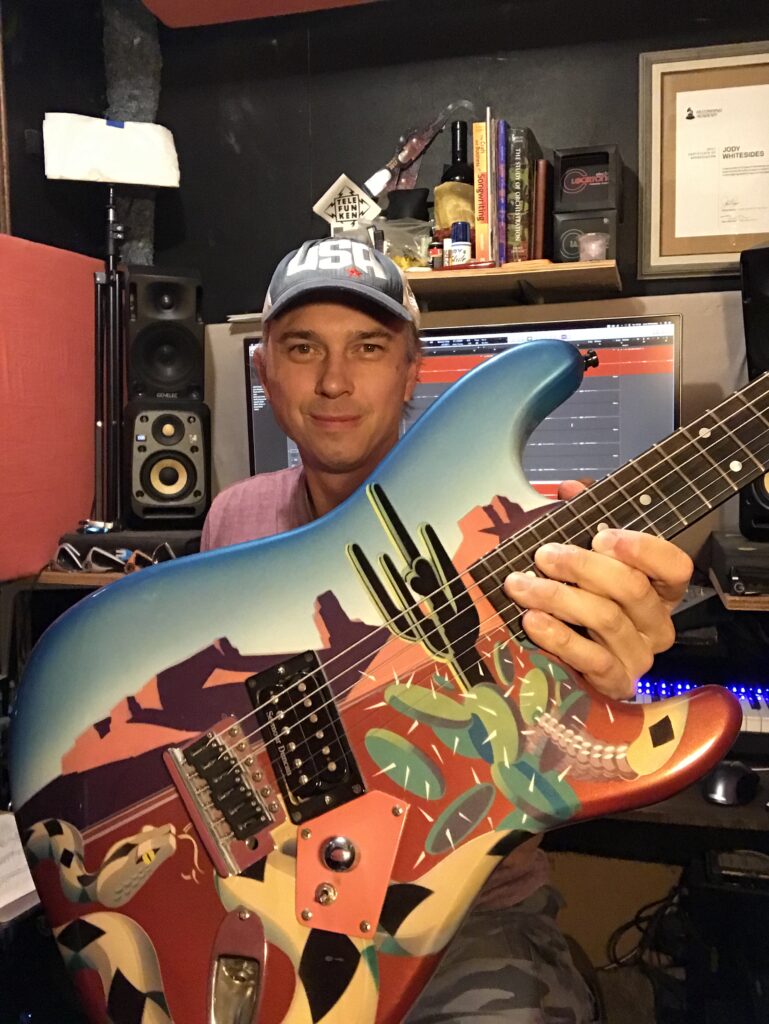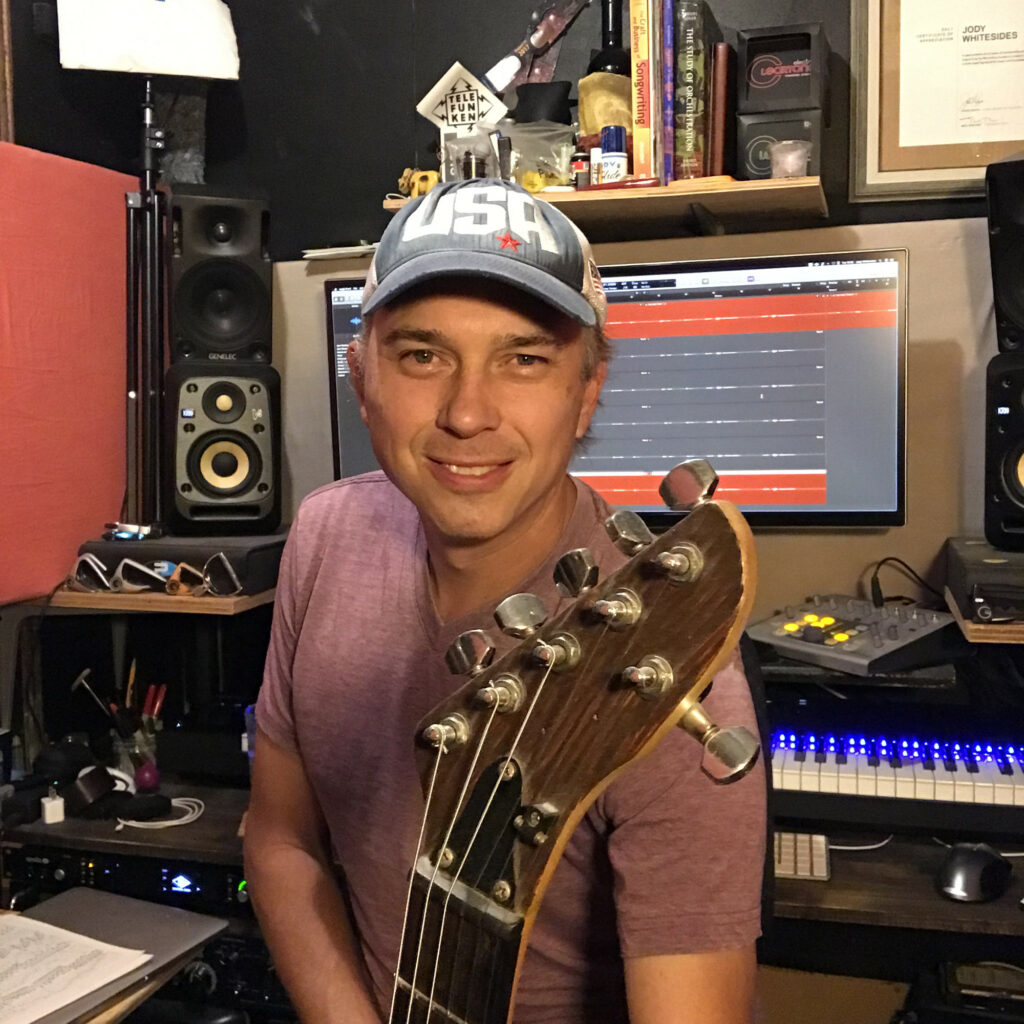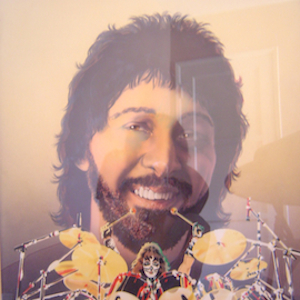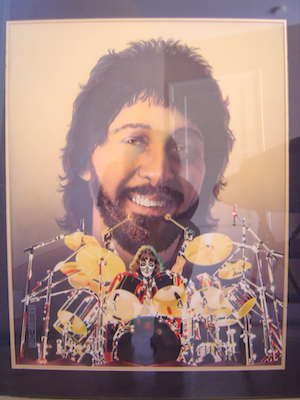I was in the middle of working on another post when the news of Eddie Van Halen passing away jumped out at me as a notification on my computer screen. WTF?!?

As a guitar player, that kinda hits pretty hard. Mainly because he was one of the most influential guitarists in the history of guitar. It was common knowledge that he did have throat cancer, but last I had heard he had it beaten back. Apparently that really wasn’t the case, or maybe I misinterpreted the prior news when it was first announced he had gotten it and was dealing with it.
Whatever the case may be, the world of music has been smashed in the face yet again in 2020. I texted a friend immediately on seeing the news asking: can 2020 get any more fuckin worse? People are making “bingo” cards of all the crazy shit that could happen in 2020 – I’m guessing no-one had Eddie Van Halen dying on their playfield. I certainly didn’t.
In the grand scheme of the world, most people may never understand.
What makes it kinda crazy to me is that there was a point early on in my career where I had a parallel to Eddie. While attending music school a buddy of mine, Justin Sayne, wanted one of the pickups out of my first guitar, a Fender Squire Strat. We spent an afternoon in my apartment pulling the strings off, the pick guard off and then he took his drill out with a massive drill bit. See he wanted a fender single coil and was willing to give me a humbucker in exchange. We had to drill out the body of the guitar in order to fit the humbucker into the space where the single coil was previously ensconced.
It was true guitar hackery in its basest form. No measuring tools, no router, just pure human eyeballing of how deep and wide to drill into the wood each time as we removed wood. It looked absolutely awful when we got done. Then we had to hack the pickguard. Again, no router, no means of measuring other than placing the pickup on the pickguard and outlining where the intent was to melt it out with a soldering iron. Yeah, you read that right.
There we were in a studio apartment with a hot soldering iron trying to be delicate with staying on the line to punch out multiple holes to remove the excess plastic to fit the pickup in. It smelled awful and stunk up the place. Once we got done with melting it out, we had to sand it smooth so it didn’t look excessively stupid.
We got it all wried up and reassembled. That was my trial by fire to modify a guitar. Much like Eddie’s infamous frankentstein guitar. He built that from scrap parts and assembled it to be something that he wanted that wasn’t really on the market. Of course when we did this there were plenty of guitars on the market that were Fenders with two single coils and a humbucker. As a starving music student, you don’t have the option of picking up new guitars all the time. So it was born out of a trade of necessity.
Over the years I made additional modifications to the very same guitar.
After music school I opted to give it a custom paint job. This was an undertaking not unlike Eddie’s as well. He was notorious for stripping guitars and spray painting them with various colors. Mostly using tape and making bold shapes. My adventure was a tad different. Having a father that is known as one of the most influential graphic illustrators in art history, I had a bit more of a guided approach. Once I pulled the guitar apart, it took me days to remove the cherry red paint job that Fender had originally given the guitar. Days. Days of hard sanding. It felt like forever getting all the layers of that shit off. Once I got done with removing the paint I ended up thinking I wanted a single humbucker pickup instead of the 3 pickup guitar it was.
Next step was filling in the unneeded pickup holes. That took a few days as well. It took a lot of wood filler and time to dry. Despite taking my time, I still managed to screw it up. The wood filler shrank more after the paint was put on and if one looks closely at the body, the outline of the old pickup holes can be seen.
My dad tried to research what type of paint he should use for the images that were going on the guitar. We didn’t really have a direct line to any guitar manufacturers at that time, remember I was still learning how to play. Even though I knew this is what I wanted to do with my life, I was a total unknown from a small town. Eventually someone told him to use auto body paint for its durability. He bought some different colors that were needed for the paint job and started to make his stencils for the scene depicted on the guitar. Once he started painting with his airbrush, he got a bit agitated. What the problem was is, auto body paint is super thick, not very viscous. He clogged his super expensive airbrush meant for much more delicate work. It took time to clean it out and then figure out how to thin out the paint and stop it from clogging the apparatus.
He got the image done and we took it somewhere to put a clear coat on it. I’m guessing it was auto body clear coat. Not the kind of clear coat that guitars would normally get. Something in the clear coat process muffed up the image of the snake in a spot or two. My dad had to paint over it a bit more to fix it, then we sent it out for more clear coat. Again, something that you wouldn’t see from a distance but up close you can see a bit of the layers in the paint job, which kinda gives it a bit of 3D effect up close.

I call it my Desert Guitar. You can see why.
That wasn’t the end of the modifications. While Eddie eventually had multiple guitar makers fanning all over him to be his next guitar maker, I had my friend Justin. Eddie’s Frankenstein guitar got laser measured to be able to match the feel of his well worn neck. Modern tech allowed Ernie Ball to computer cut new guitars to feel like his monster. For me, I haven’t reached that point. However, at one point in an airport while hanging with the boys from The Boogie Knights, the guitar player John was playing on my Desert Guitar. He loved the feel then took one look at the headstock and said: That looks so 80’s metal.
I had a moment. A moment of like, fuck I don’t represent that and I don’t want my guitar to scream that either. I got on the phone with Justin as he was making guitars for a living (still does). The neck I had was a “Jackson” style Warmoth replacement neck for Fenders. I said, can we do something about the headstock to make it look less 80’s metal. Justin asked me to send the neck to him. Once home I whipped that neck off the guitar and shipped it out to Justin. He asked if I had any ideas and I said: just make it look not metal. I didn’t have a plan and modifying something like a headstock isn’t really the easiest thing. Justin did what he could and sent it back to me.
At first I was like WTF happened?!? Justin lopped off the pointy end and put some strange grooves in the front of it, which meant a need to put the machine head for the high E string somewhere else. I didn’t want to buy a new neck because much like Eddie’s main axe, I had this neck broken in to feel great when playing. So I had to learn to enjoy the new look. I also had to get used to the fact that the machine head for the high E operates backwards from how most bottom of the headstock machine heads work because it was originally on the top. I still use it this way now.

I’m not sure if Eddie ever loaned his guitars to friends. He probably did. Wolfie, Alex, Valerie, Ted, any of you know? Due to my living arrangements, meaning that I lived with Jeff Scott Soto, I had multiple musicians in my orbit and lot of them were awesome guitar players. Because I was the resident guitar player and had quite a few guitars in the condo, my axes would give picked up and played by more players than I. Lots of guitar players aren’t very good with this, but it never bothered me.
The Desert Guitar was always the one people tended to gravitate towards. I can think of a couple of reasons for this. One, the paint job. Two, the headstock. Three, the simplicity of it, it had a single humbucker and one volume knob. Four, it sounded really damn good. Whatever it was, guitarists that played always wanted to borrow it for recordings. I was happy to oblige if I wasn’t using it. Thus my Desert Guitar has been on even more recordings than I used it for.
The weird thing is, nothing about the guitar screams well built, accurate measure, etc. What I mean is, it should sound awful and feel like shit. The exact opposite is true. It feels great and sounds great. We all know Eddie’s guitars sounded great and people that buy the worn in versions from his template say they feel great too. Which goes to show, you don’t always need a perfect instrument to be a great player or to sound amazing.
Now that I’ve spewed all that out while listening to Van Halen for the past couple of hours. I’m going to leave you with this…
We’ll always have the legacy that Ed left, but its highly unlikely there will ever be a guitarist as mind-blowing as Ed was. He took the instrument places most people will never go. For that we should all be grateful. There are those of us who will really miss you Eddie Van Halen. Thank you for doing what you did and how you did it.






